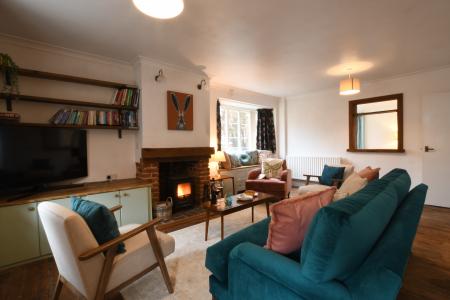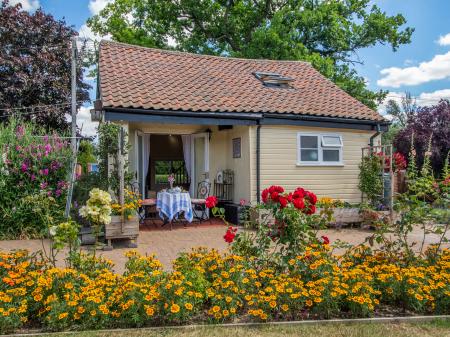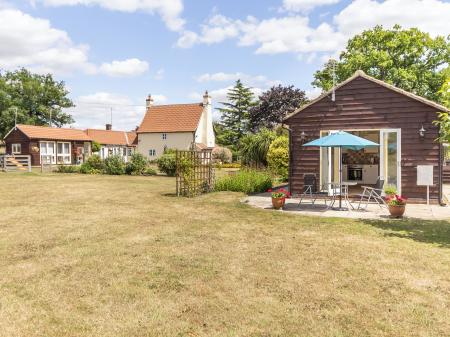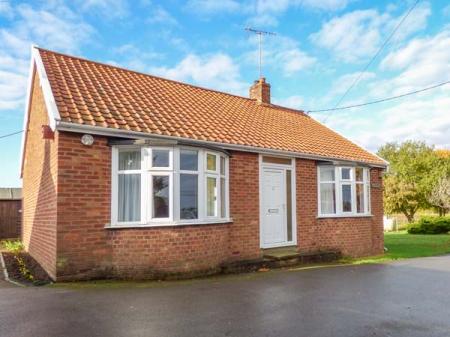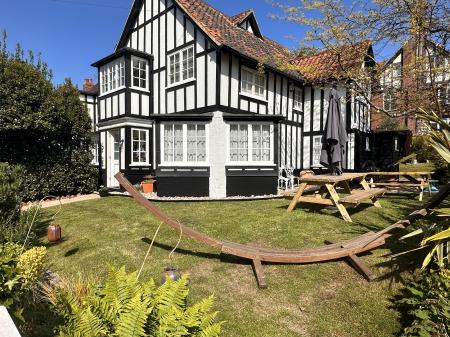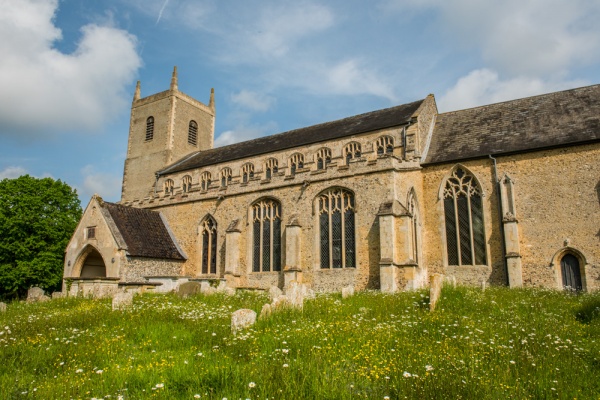
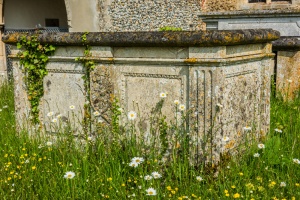
The church was built in the early 14th century to replace a late Saxon building. At that time it was under the control of the rich and powerful Abbey at Bury St Edmunds. The east window has beautiful Decorated tracery and the sedilia, chancel arches, and font all date to the 14th century.
One unusual addition is a brick vestry built in the Elizabethan period. Another later feature is the very nice 15th century timbered nave roof. There is an oval coat of arms to Charles II - the shape is worth noting as royal arms are almost always rectangular or diamond-shaped.
The interior features a large number of funerary monuments, including many to members of the Holt, Wilson, and Bacon families. There is also the largest collection of hatchments in any Suffolk church - thirteen to be precise.
However, the finest of the memorials must be the brass to Anne Butts, who died in 1609, and was related to the Bacon family whose members are commemorated throughout the church. The detail on the brass is quite stunning, and it gives a wonderful picture of period costume.
In the north aisle is the grandiose table tomb to Butts's daughter Anne and her husband Sir Nicholas Bacon. This rather amazing creation was the work of Nicholas Stone and depicts the couple lying side by side. Here again, the detail of the costumes is superb. Sir Nicholas's ceremonial funeral sword, gauntlets and helmet hang nearby.
Sir Nicholas's father, also named Nicholas, purchased the Redgrave estate after the Dissolution of the Monasteries. He would later rise to become Lord Keeper of the Privy Seal under Elizabeth I. In 1561 the elder Sir Nicholas founded a grammar school in the nearby village of Botesdale, and one of the original desks from the school stands in a corner. Not surprisingly perhaps, the Elizabethan pupils could not resist carving their names on the desk.
Much grander is the rather fabulous Baroque memorial to Sir John Holt in the chancel. Holt was Lord Chief Justice of England and in that role was responsible for ending the persecution of witches that was so prevalent in the 17th century. He died in 1610, and his monument was created by Thomas Green of Camberwell.
In the north aisle is a huge 18th-century wooden reredos with a painting of the Ten Commandments. This was built to go behind the altar but was later moved to its current location for reasons unknown.
St Mary's is a huge church, full of light and grace, with plenty of historic interest to keep you occupied. If you have an interest in the genealogy of the area you will appreciate the fact that it has the largest collection of 18th-century gravestones in the county. The church is no longer used for regular worship and is in the care of the Churches Conservation Trust.
Note that the church has limited opening times. Please check the official CCT website for current details.
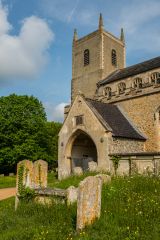
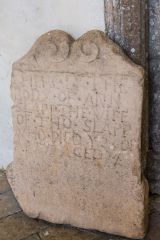
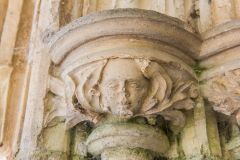
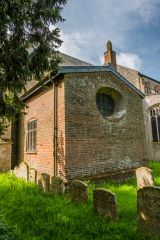
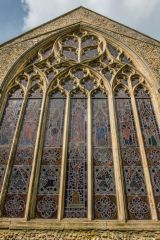
 We've 'tagged' this attraction information to help you find related historic attractions and learn more about major time periods mentioned.
We've 'tagged' this attraction information to help you find related historic attractions and learn more about major time periods mentioned.